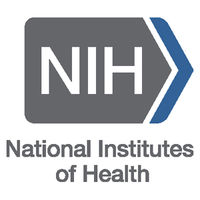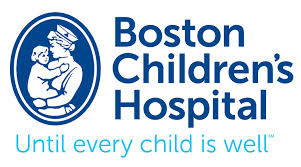预约演示
更新于:2025-05-07
Distal Myopathies
远端性肌病
更新于:2025-05-07
基本信息
别名 DISTAL MUSCULAR DYSTROPHY、Distal 1 Myopathies、Distal 1 Myopathy + [118] |
简介 A heterogeneous group of genetic disorders characterized by progressive MUSCULAR ATROPHY and MUSCLE WEAKNESS beginning in the hands, the legs, or the feet. Most are adult-onset autosomal dominant forms. Others are autosomal recessive. |
关联
2
项与 远端性肌病 相关的药物靶点- |
作用机制 糖基化刺激剂 [+1] |
非在研适应症- |
最高研发阶段临床3期 |
首次获批国家/地区- |
首次获批日期1800-01-20 |
靶点 |
作用机制 GNE基因转移 |
在研机构- |
原研机构 |
在研适应症- |
最高研发阶段无进展 |
首次获批国家/地区- |
首次获批日期1800-01-20 |
17
项与 远端性肌病 相关的临床试验NCT06923241
Nutri-score Labelling in a UK Restaurant Setting: a Randomised Control Trial
An experiment exploring the perceived effectiveness of Nutri-score food labels with calorie labelling compared to calorie labelling only on food choice and consumption in a real-world setting
开始日期2025-03-27 |
申办/合作机构 |
NCT06593951
Registry and Natural History Study for Progressive Myoclonus Epilepsy Type 1 (EPM1)
The Registry and Natural History Study for Progressive Myoclonus Epilepsy Type 1 (EPM1) is focused on gathering longitudinal clinical data as well as biological samples (blood and/or urine) from male and female patients, of all ages, who have a molecular diagnosis of EPM1or CSTB-null-related disease. Currently, there are no therapies that halt disease progression in any CSTB-related diseases, highlighting the urgency for translational research into this condition. The primary objective of the registry is to determine the natural history and genotype-phenotype correlations of disease-causing variants in EPM1 and CSTB-null-related disease.
开始日期2024-10-10 |
申办/合作机构 |
NCT06428136
Comparative Effects of Clamshell Technique With Electrical Muscle Stimulation Versus Conservative Treatment in Iliotibial Band Tightness for Pain and Function
Iliotibial band syndrome (ITBS) is a common knee injury that usually presents with pain and/or tenderness on palpation of the lateral aspect of the knee, superior to the joint line and inferior to the lateral femoral epicondyle. The current theory is that this condition is likely to be caused by compression of the innervated tissues beneath the iliotibial band (ITB), leading to inflammation.
开始日期2023-11-01 |
申办/合作机构- |
100 项与 远端性肌病 相关的临床结果
登录后查看更多信息
100 项与 远端性肌病 相关的转化医学
登录后查看更多信息
0 项与 远端性肌病 相关的专利(医药)
登录后查看更多信息
1,160
项与 远端性肌病 相关的文献(医药)2025-06-01·Genetics in Medicine
Heterozygous loss-of-function variants in SPTAN1 cause an early childhood onset distal myopathy
Article
作者: Grider, Tiffany ; Hackman, Peter ; Straub, Volker ; Palmio, Johanna ; Laine, Regina ; Waldrop, Megan A ; De Ridder, Willem ; De Winter, Jonathan ; Shy, Michael E ; Baets, Jonathan ; Rebelo, Adriana ; Longman, Cheryl ; Töpf, Ana ; Bonnemann, Carsten G ; Orbach, Rotem ; Stojkovic, Tanya ; Monticelli, Alice ; Ermanoska, Biljana ; McWilliam, Catherine A ; Folland, Chiara ; Maystadt, Isabelle ; Verma, Sumit ; Bonne, Gisèle ; Ravenscroft, Gina ; Cairns, Anita ; Demurger, Florence ; Flanigan, Kevin M ; Isapof, Arnaud ; Udd, Bjarne ; Cohen, Enzo ; Meyer, Alayne P ; Nicolau, Stefan ; Johari, Mridul ; Van de Vondel, Liedewei ; Züchner, Stephan ; Diaz-Manera, Jordi ; Donkervoort, Sandra ; Beecroft, Sarah
2025-06-01·Life Science Alliance
The MFN2 Q367H variant reveals a novel pathomechanism connected to mtDNA-mediated inflammation
Article
作者: Sabouny, Rasha ; Sharma, Govinda ; Shutt, Timothy E ; Pfeffer, Gerald ; Zaman, Mashiat ; Soule, Tyler Gb ; Chute, Cole ; Joel, Matt ; Joseph, Jeffrey T ; Almutawa, Walaa ; Mohan, Armaan
2025-05-01·Journal of Neurology, Neurosurgery & Psychiatry
MYH7-related myopathies: clinical, myopathological and genotypic spectrum in a multicentre French cohort
Article
作者: Bouhour, Françoise ; Severa, Gianmarco ; Evangelista, Teresinha ; Romero, Norma Beatriz ; Féasson, Léonard ; Fernández-Eulate, Gorka ; Pegat, Antoine ; Tard, Celine ; Jacquin-Piques, Agnès ; Stojkovic, Tanya ; Métay, Corinne ; Pereon, Yann ; Kamoun, Emna ; Laforêt, Pascal ; Acket, Blandine ; Carlier, Robert Yves ; Lagrange, Emmeline ; Malfatti, Edoardo ; Léonard-Louis, Sarah ; Duval, Fanny ; Sole, Guilhem ; De la Cruz, Elisa ; Nadaj-Pakleza, Aleksandra ; Toutain, Annick ; Quijano-Roy, Susana ; Bahout, Marie ; Villar-Quiles, Rocío Nur ; Salort-Campana, Emmanuelle ; Cavalli, Michele ; Behin, Anthony ; Masingue, Marion ; Richard, Pascale
4
项与 远端性肌病 相关的新闻(医药)2025-04-24
·梅斯医学
小杰,13岁,从小走路比别的孩子慢,还总爱摔跤。家人注意到他的小腿特别粗,以为是“练出来的肌肉”,甚至觉得挺骄傲。但渐渐地,小杰连站起来都费劲,上楼得双手扶着,起身要靠“爬”的动作才能完成。最近,他连短短几步路都走得气喘吁吁。带孩子来医院就诊后,医生检查发现:小腿虽然看起来壮实,其实是肌肉被脂肪和结缔组织替代了,医学上称为“假性肥大”。进一步基因检测,确诊为Duchenne型进行性肌营养不良(DMD),患儿肌肉会逐渐退化,从四肢无力发展到心肺功能受损,多数患者在青春期就需依赖轮椅。医生提醒:小腿粗≠强壮,走路费劲≠发育慢,尤其孩子出现以下表现,建议及时就诊:小腿粗但力量差、起身时需用手支撑地面“爬起来”、上楼困难、步态笨拙、常跌倒或走路像“鸭子步”。早筛查、早干预,才能尽可能延缓疾病进展!什么是进行性肌营养不良症进行性肌营养不良症( pogressre muscular dystrophy , PMD)是一组遗传性肌肉变性疾病,临床特征主要为缓慢进行性加重的对称性肌肉无力和萎缩,无感觉障碍。遗传方式主要为常染色体显性、隐性和x连锁隐性遗传。电生理表现主要为肌源性损害、神经传导速度正常。组织学特征主要为进行性的肌纤维坏死、再生和脂肪及纤维结缔组织增生,肌肉无异常代谢产物堆积。临床表现假肥大型肌营养不良症因肌束内脂肪和纤维组织堆积造成肌肉假性肥大,主要分为杜氏肌营养不良(DMD)和贝氏肌营养不良(BMD)两型。DMD为X连锁隐性遗传,3~5岁起病,表现为骨盆带肌无力、鸭步、Gowers征,90%有腓肠肌假性肥大,CK显著升高,晚期呼吸和心功能衰竭常致死。BMD起病较晚(5~15岁),进展缓慢,12岁后仍可行走,心肌较少受累,寿命接近正常。面肩肱型(FSHD)为常染色体显性遗传,青少年期起病,先累及面部和肩胛带肌,常见“肌病面容”、翼状肩胛,不对称性萎缩,进展缓慢,部分需轮椅,寿命基本正常。肢带型多为常染色体隐性遗传,10~20岁起病,从骨盆带肌开始无力,伴腓肠肌假肥大、翼状肩胛,血清酶升高,病情缓进,20年左右丧失劳动能力。眼咽型为常染色体显性遗传,40岁左右起病,表现为上睑下垂、眼外肌和咽肌无力,发音吞咽困难,近端肌无力,CK轻度升高。Emery-Dreifuss型为X连锁隐性遗传,5~15岁起病,早期肘、跟腱挛缩,颈脊僵硬,上肢远端和骨盆带肌萎缩,智力正常,心脏传导障碍严重,是主要致死原因。其他类型如眼肌型(仅累及眼肌)、远端型(远端肌起病、伸肌受累)、先天型(出生即无力、关节挛缩),均较少见,具体症状因型而异。辅助检查进行性肌营养不良症的诊断包括多种手段。血清酶学检测常用肌酸激酶(CK)、乳酸脱氢酶(LDH)及CK同工酶(CK-MB),在DMD、BMD、Miyoshi型及LGMD2C2F中可显著升高至正常的20100倍,其他类型多为轻中度升高。晚期患者因肌肉严重萎缩,CK水平反而下降,谷草转氨酶及谷丙转氨酶在进展期亦可升高。肌电图显示典型肌源性损害,表现为静息期出现纤颤波、正锐波,轻收缩时运动单位电位缩短、波幅减低、多相波增多,强收缩时出现病理干扰相,神经传导速度正常。基因检测是确诊的重要手段。多重PCR或MLPA可检测DMD基因外显子缺失,印迹杂交用于FSHD的分子确诊,DNA测序可明确LGMD等类型的突变碱基。肌肉活检在各型中均可见肌纤维坏死与再生、脂肪和纤维组织增生,通过免疫组织化学法使用特异性抗体可辅助鉴别,如抗肌萎缩蛋白用于DMD/BMD,γ-肌聚糖蛋白用于LGMD2C,α-肌聚糖蛋白用于LGMD2D,β-肌聚糖蛋白用于LGMD2E,Emerin蛋白用于EDMD。其他检查如X线、心电图、超声心动图可评估心肌受累,CT与MRI可见肌肉变性所致的“蚕食现象”,DMD与BMD患者需评估智力状况。治疗进行性肌营养不良症目前尚无特异性治疗,主要依靠对症及支持疗法。加强营养、适度锻炼可延缓病情进展,物理治疗和矫形措施有助于预防或改善脊柱畸形与关节挛缩,特别是早期干预踝关节挛缩对维持行走能力尤为关键。应鼓励患者积极参与日常活动,避免长期卧床。药物治疗方面,可应用ATP、肌苷、维生素E、肌生注射液及中成药如通塞脉片等。新兴疗法如外显子跳跃、微基因替代的基因治疗及干细胞移植,正处于研究阶段,未来可能成为有效手段。由于目前无法根治,遗传咨询和产前诊断尤为重要。确诊患儿后应明确其基因型,并判断母亲是否为携带者。若确认为携带者,应在孕期判断胎儿性别并对男胎进行产前基因检测,如为患病胎儿可考虑终止妊娠,以预防患儿出生。参考资料:1.杨帆,任兆瑞,曾凡一. 假性肥大性进行性肌营养不良的治疗进展. 国际遗传学杂志,2019,42(01):49-55. DOI:10.3760/cma.j.issn.1673-4386.2019.01.0092.杨书婷,李梅. 进行性肌营养不良的最新诊疗与评估进展. 国际儿科学杂志,2020,47(02):87-90. DOI:10.3760/cma.j.issn.1673-4408.2020.02.0043.中华医学会医学遗传学分会遗传病临床实践指南撰写组,谭虎,梁德生,等. 杜氏进行性肌营养不良的临床实践指南. 中华医学遗传学杂志,2020,37(03):258-262. DOI:10.3760/cma.j.issn.1003-9406.2020.03.006来源 | 梅斯医学编辑 | wanny神经系统罕见病交流群↓点击下方“阅读原文”,下载梅斯医学APP吧!
临床研究
2024-12-10
在基因治疗中,基因载体的递送能力和基因的大小是两个重要的挑战。对于许多遗传性疾病,如肌肉萎缩症、Stargardt病等,由于病理上涉及的基因较大,现有的递送方法往往无法满足这些较大基因的递送需求。因此,如何在不受基因大小限制的情况下递送大基因,成为了基因治疗领域亟待解决的难题。
为了解决这一问题,科学家们探索了一种创新技术——StitchR技术。这一新技术通过利用核酶(ribozyme)激活的mRNA转导联接机制,将较大基因分割为两部分并分别递送,然后在细胞内将其无缝连接,重新恢复功能性蛋白的表达。这一突破性进展有望为许多遗传疾病提供全新的治疗方案。相关研究结果发表在最新一期的Science期刊上。
什么是StitchR技术
核酸酶是一类广泛存在于自然界的小型催化RNA序列,能够特异性地对核苷酸进行自我剪切。这些核酸酶在剪切过程中生成了2′,3′-磷酸和5′-羟基的特异性末端,这些末端类似于最近被鉴定的细胞RNA修复途径的底物。
研究发现,两个独立的mRNA经过核酸酶剪切后,在真核细胞中可以实现无缝的转连接,并翻译成全长蛋白。作者将这一过程命名为StitchR(意为“缝合RNA”)。通过在哺乳动物细胞中优化StitchR活性,蛋白表达水平提高了约900倍,接近通过单一载体表达基因的水平(图1)。
图1. 在哺乳动物细胞中优化核酸酶激活的RNA转连接和翻译。(A) StitchR 3.0 RNA转连接报告基因设计示意图。包含内含子[剪接供体(SD)和剪接受体(SA)序列]的GFP开放阅读框(ORF)被分割成两个不重叠的N端(Nt)和C端(Ct)载体。在Nt-GFP和Ct-GFP载体的3′端和5′端分别使用小催化核酸酶(Rz)来创建精确的RNA末端和无缝转连接。(B) 共转染Nt-GFP和Ct-GFP载体可在细胞中产生GFP荧光(白色箭头所示)。通过优化核酸酶序列(StitchR 2.0)以及引入包含分割内含子的设计(StitchR 3.0),可以进一步增强GFP的荧光信号。(C) 对从主要核酸酶家族中选取的代表核酸酶催化的StitchR活性进行了成对比较。这些核酸酶分别克隆到StitchR 3.0 Nt和Ct-荧光素酶(Luc)载体中,并在COS7细胞中检测其活性。(D) 使用活性核酸酶(Rz)或催化突变核酸酶(mRz)与从单一ORF表达的荧光素酶相比,测定StitchR 1.0至4.0荧光素酶报告基因的相对荧光素酶活性,无论是否包含内含子。(E和F) 采用特异性重组荧光素酶mRNA缝合接缝探针进行BaseScope检测,获取转染Nt-Luc和Ct-Luc的COS7细胞中的mRNA转连接位置的共聚焦图像,(E)在24小时后,或(F)在更早的时间点检测结果图。比例尺为10μm。
StitchR的优势
StitchR技术的核心创新是利用核酶切割两条分离的mRNA序列,并在细胞内将其精准连接成一个完整的mRNA,从而产生功能性蛋白。这一过程不依赖于传统的蛋白质剪接方法,而是在RNA水平完成,无论是效率还是精准度都远远优于传统方法。
StitchR技术的主要优势有:
突破基因递送的大小限制:StitchR技术能够通过将大基因分割成两部分递送,成功突破了传统AAV载体对基因大小的限制。这意味着StitchR可以应用于治疗那些因基因过大无法有效递送的疾病,如肌肉萎缩症、某些类型的遗传性视力丧失等。
高效表达功能蛋白:在哺乳动物细胞中,StitchR技术可以将两条mRNA无缝连接,并确保只表达全长蛋白。这一点与其他双载体方法不同,后者虽然也能够递送较大基因,但常常由于效率低下或不完全的蛋白翻译产生不完全的蛋白产物,而StitchR技术则能精准地确保功能性全长蛋白的表达。
精确修复与减少副作用:与传统的基因治疗方法不同,StitchR通过RNA级别的转导联接,能够减少基因拼接错误的发生,从而降低副作用的风险。它还避免了其他蛋白质连接技术(如inteins)可能导致的未知细胞影响。
灵活的应用范围:StitchR技术可以与多种不同类型的载体(如AAV、慢病毒等)结合使用,且能够与任何mRNA序列相兼容。这为其在多个疾病领域的应用打开了广阔的前景。
StitchR的应用案例
与Dysferlin基因突变相关的肌肉功能障碍疾病的基因治疗
Dysferlin基因编码一种237 kDa的大型膜蛋白(图2),其功能丧失性突变会导致肌肉功能障碍,主要表现为三种营养不良表型:肢带型肌营养不良症2B/R2型(LGMD2B/R2)、Miyoshi肌病(MM)和以胫骨前肌起始的远端肌病(DMAT)。研究者使用StitchR技术,通过分割Dysferlin基因并分别递送两个mRNA片段,成功在动物模型中恢复了Dysferlin蛋白的表达,并显著改善了肌肉功能。
图2. StitchR介导的在Dysferlin基因敲除小鼠(A/J品系)中表达人类全长Dysferlin(DYSF)。(A) Dysferlin基因编码一种大型膜相关蛋白,其功能丧失突变会导致肢带型肌营养不良症2B/2R型、Miyoshi肌病(MM)和以胫骨前肌起始的远端肌病(DMAT)。Dysferlin的开放阅读框(ORF)超出了单个AAV载体的包装能力,但可以通过使用双AAV载体方法完全包装。采用StitchR介导的双AAV9载体方法,在肌肉特异性CK8e启动子的控制下重构并表达全长人类Dysferlin。(B和C) 人类Dysferlin在股四头肌中广泛表达,并与野生型Dysferlin类似地定位在肌纤维膜上,但也观察到在细胞内积累,这在其他Dysferlin转基因方法中也有类似发现。(D) WesternBlot显示,使用StitchR Nt和Ct-Dysferlin AAVs注射的小鼠中表达的人类Dysferlin蛋白的模式与小鼠中野生型Dysferlin相似。(E至G) 在股四头肌中,与野生型雄性和雌性小鼠中观察到的水平相比,全长人类Dysferlin的表达水平为150.8%,在胫骨前肌(TA)中为114.1%,在心脏中为510.6%。
杜兴氏肌营养不良症(DMD)的基因治疗
DMD中的Dystrophin蛋白由一个超过两个AAV基因组包装限制的开放阅读框编码,其大片段缺失通常表现为较为温和的Becker肌营养不良症(BMD)。作者用StitchR 4.0载体对表达了截短但功能性强的人类Dystrophin(DH2-R15)(图3)。在Dystrophin-KO小鼠(D2-mdx)中,使用肌肉特异性AAV9载体和CK8e启动子注射后,StitchR注射的小鼠中股四头肌和膈肌骨骼肌中的肌肉结构得到保持,并且内肌膜纤维化正常,明显优于对照组。免疫荧光染色显示DH2-R15 Dystrophin正常膜定位,并广泛表达在肌纤维中。与其他严重截短的迷你或微Dystrophins不同,DH2-R15 Dystrophin能够恢复nNOS的膜定位,且在股四头肌、TA肌肉和心脏中的蛋白表达接近正常水平。免疫印迹和光密度测量进一步确认了DH2-R15 Dystrophin的表达,并且肌肉损伤标志物恢复至野生型水平。
图3. 在DMD小鼠模型中,使用StitchR介导的全功能DH2-R15肌营养不良蛋白的治疗结果。(A) Dystrophin基因中的功能丧失性突变导致杜氏肌营养不良症。Dystrophin基因中的大片段缺失,导致肌营养不良蛋白截断,结果是较轻的贝克肌营养不良症(BMD)。通过使用StitchR介导的双AAV策略,表达一个全功能的(DH2-R15)肌营养不良蛋白,其大小超过了在BMD中发现的一些截短型肌营养不良蛋白。(B至D) StitchR介导的DH2-R15肌营养不良蛋白通过双AAV9载体进行体内递送,在骨骼肌中表达,并且肌肉特异性CK8e启动子挽救了肌肉病理,正确定位在肌纤维膜上,并纠正了nNOS的膜定位,这在D2-mdx小鼠中通常被破坏。(E) 肌肉裂解物的Western Blot显示只有全长DH2-R15肌营养不良蛋白表达,并且在雄性和雌性小鼠的股四头肌中与野生型水平相似。(F) 密度测定显示DH2-R15肌营养不良蛋白,相对于Vinculin表达,达到了野生型肌营养不良蛋白水平的94.9%。(G) StitchR 介导的DH2-R15肌营养不良蛋白在D2-mdx小鼠中表达,使血清肌酸激酶(CK)水平正常,并且(H)显著减少了中心核肌纤维的百分比,这两者都是DMD的标志。
基因编辑
目前的基因组编辑系统,如CRISPR和先导编辑,受限于AAV载体的包装能力。作者开发了StitchR 4.0载体对以表达先导编辑PEmax(StitchR-PE)(图4,A和B)。使用先导编辑GFP报告基因系统,StitchR-PE在细胞中产生了强烈的GFP荧光,与单ORF表达PEmax的载体相当(图4C)。为了量化活性,作者开发了基于荧光素酶的报告基因LUPER,结果显示StitchR-PE的活性为单ORF表达PEmax的82%,是先前报道的载体的两倍(图4E)。为了调控PEmax的长期表达,作者通过化学调节发现,ecDHFR-StitchR-PE在缺乏甲氧苄啶时活性显著抑制,而在1 mM TMP存在下,活性增加了约35倍(图4,G和H)。
图4. StitchR介导的先导编辑。(A) 设计了一个StitchR介导的Prime Editor(StitchR-PE)来表达Prime Editor PEmax和Prime Editing组件,包括(B)在Ct载体中包含了用于质粒编辑导向RNA(pegRNA)和切口酶单导向RNA(sgRNA)盒。(C) 使用PEAR-GFP质粒编辑报告基因比较了StitchR-PE活性与从单一ORF表达的PEmax。(D) 设计了一个基于荧光素酶的质粒编辑报告基因(LUPER)以精确比较从单一ORF表达的StitchR-PE和PEmax。(E) 在LUPER报告基因测定中,StitchR-PE的活性为从单一ORF(不含内含子)表达的PEmax活性的81.2%,是基于分裂内含肽PEmax载体对活性的两倍。(F) 为了生成一个化学控制的先导编辑系统,我们将大肠杆菌(ecDHFR)的不稳定域融合到StitchR Nt载体中PEmax的N端。(G) 在没有TMP(DMSO对照)的情况下,只观察到少数PEAR-GFP阳性细胞,而(H)添加1 mM TMP导致PEAR-GFP表达细胞的显著增加和LUPER Prime Editing荧光素酶报告基因的37倍增加。
StitchR的应用前景
StitchR技术的突破为基因治疗的未来打开了广阔的应用前景。随着技术的进一步优化,StitchR有望在以下几个方面产生深远的影响:
遗传性疾病的治疗:对于那些因基因过大而无法使用传统方法治疗的遗传性疾病,如肌肉萎缩症、某些类型的遗传性视力障碍等,StitchR技术提供了一个理想的解决方案。
癌症免疫治疗:StitchR不仅能够递送大分子治疗基因,还可以用于免疫治疗相关基因的递送,如免疫检查点抑制因子、细胞因子等,增强癌症免疫治疗的效果。
细胞治疗和组织再生:在细胞治疗和组织再生领域,StitchR可以用来递送需要高效修复的基因,帮助恢复受损组织的功能,特别是在神经、肌肉等需要大分子蛋白修复的领域。
疫苗开发:StitchR可以用来递送较大且多变的免疫原性基因,为新型疫苗的研发,尤其是针对变异病毒的疫苗提供新的思路。
如果您有兴趣了解如何将StitchR技术应用于您的研究或治疗中,派真生物可以提供专业的支持与定制化服务。同时派真CRO &CTDMO 一站式服务平台,提供从基因合成、载体构建,到病毒包装的整体解决方案,全面支持您的基因编辑研究。更有派载体平台助力构建设计一体化,欢迎后台留言了解详情。
扫码查看文献相关载体元件
SD-Rz
Rz-SA
参考资料:
1. Sean R. Lindley et al. Ribozyme-activated mRNA trans-ligation enables large gene delivery to treat muscular dystrophies. Science, 2024, doi:10.1126/science.adp8179.
关于派真生物
基因疗法信使RNA临床结果临床1期
2023-03-20
WOODBRIDGE, Conn.--(BUSINESS WIRE)-- Cure Rare Disease (CRD) - a nonprofit biotechnology company focused on developing treatments for ultra-rare diseases - announces the appointment of leading experts in the fields of gene therapy and neuromuscular disorders to its Scientific Advisory Board (SAB).
As part of their role, SAB members help advance CRD's preclinical and clinical development of its gene therapy and antisense oligonucleotide (ASO) programs, providing strategic advice on scientific, regulatory, and clinical matters.
The members of the newly appointed SAB bring a wealth of expertise and experience in the areas of treatment and therapeutic development for neuromuscular diseases. They include:
Nick Johnson, M.D., M.Sci., FAAN (Board Chair)
Adult Neurology, Neuromuscular Vice Chair, Research Associate Professor, VCU School of Medicine
Carsten Bonnemann, M.D.
Senior Investigator, Neuromuscular and Neurogenetic Disorders of Childhood Section, NIH Intramural Research Program
Elizabeth McNally, M.D., Ph.D.
Professor and Director, Center for Genetic Medicine Professor of Medicine
(Cardiology) and Biochemistry and Molecular Genetics, Northwestern Feinberg School of Medicine
Perry Shieh, M.D., PhD
Neurology, Neuromuscular Medicine, UCLA Health
Alan Beggs, Ph.D.
Director, The Manton Center for Orphan Disease Research
Sir Edwin and Lady Manton Professor of Pediatrics, Harvard Medical School
"CRD is honored to welcome these esteemed experts in gene therapy and neuromuscular disorders to our scientific advisory board," said Rich Horgan, MBA, Founder and CEO of CRD. "Their insights and guidance will be critical as we continue to advance our programs and work towards our goal of providing life-saving treatments to individuals with rare diseases."
CRD currently has 19 therapeutic programs under development, including potential treatments for Duchenne muscular dystrophy, Limb Girdle muscular dystrophy, SCA3 and ADSSL1 distal myopathy, as well as a program aimed at overcoming the challenges of neutralizing antibodies in gene therapy delivery. Collectively, these programs offer pragmatic hope of treatment to more than 200,000 Americans living with rare and ultra-rare diseases.
About Cure Rare Disease
Cure Rare Disease (CRD) is a nonprofit biotechnology company focused on the development of genetic medicines for rare and ultra- rare diseases. CRD is committed to accelerating the development of treatments for individuals with rare diseases through a patient-centric approach to research and development. The company's programs include gene therapy and antisense oligonucleotide (ASO) treatments for a range of rare diseases. For more information, please visit .
高管变更寡核苷酸基因疗法
分析
对领域进行一次全面的分析。
登录
或

生物医药百科问答
全新生物医药AI Agent 覆盖科研全链路,让突破性发现快人一步
立即开始免费试用!
智慧芽新药情报库是智慧芽专为生命科学人士构建的基于AI的创新药情报平台,助您全方位提升您的研发与决策效率。
立即开始数据试用!
智慧芽新药库数据也通过智慧芽数据服务平台,以API或者数据包形式对外开放,助您更加充分利用智慧芽新药情报信息。
生物序列数据库
生物药研发创新
免费使用
化学结构数据库
小分子化药研发创新
免费使用



